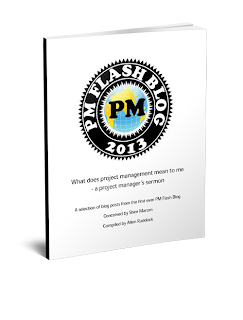A coffee shop discussion on process redesign and process improvement led me to state the obvious to my caffeine-charged debaters:
Managers responsible for the business buy results [and outcomes], not process. Process, by itself, does not sell well; what sells is results.
Process per se is a tool. For the most part, business people hire experts for their ability to deliver results; what tools they use are somewhat immaterial [to the business person]. The same for process redesign: the design per se is not the objective; the objective is better business results.
To help the discussion along, I postulated a "process breakdown structure", an obvious play on the WBS (Gasp! WBS! I can hear the agiliers running away .... come back! It's ok)
Of nouns and verbs
Just like a WBS is an organization of 'nouns' [outcomes or deliverables] that beget 'verbs' to explain the "how" of it, so also in a PBS
The PBS is fundamentally 'nouns'....outcomes of the process....arranged like a WBS. The PBS has elements of hierarchy--parent/child--and relationship [example: we all have a temporary relationship to each other because we are all engaged in this blog...I wrote it and you're reading it]
The first process improvement is to do away with nouns that aren't valuable. Lean out the clutter and reduce the complexity
And just like for a WBS, for every noun there is a verb: the activities of the process.
Sequencing the verbs
We all know there is no schedule or time dimension to a WBS. It's as if the WBS is the 'present value' of the schedule results; all deliverables brought back to the present. Thus, sequencing has to be done elsewhere, and that is usually in the schedule
So also in a PBS: for each noun there is a verb, but the repository for verbs is the process activity list. Take the nouns from the PBS and verbs from the process list, and you can just about write the narrative of the process.
Just add to the nouns and verbs the sequencing, durations, and dependencies that are properties [adverbs and adjectives] of the activities in the list. String them out in a network and you then have the process in the usual format.
Resource the verbs
Verbs require resources. Minimizing the resources; leaning out the non-value verbs and sequences that consume resources; and resolving dependencies that add more friction than value is the way to improve the process.
Read in the library at Square Peg Consulting about these books I've written
Buy them at any online book retailer!
Read my contribution to the Flashblog

